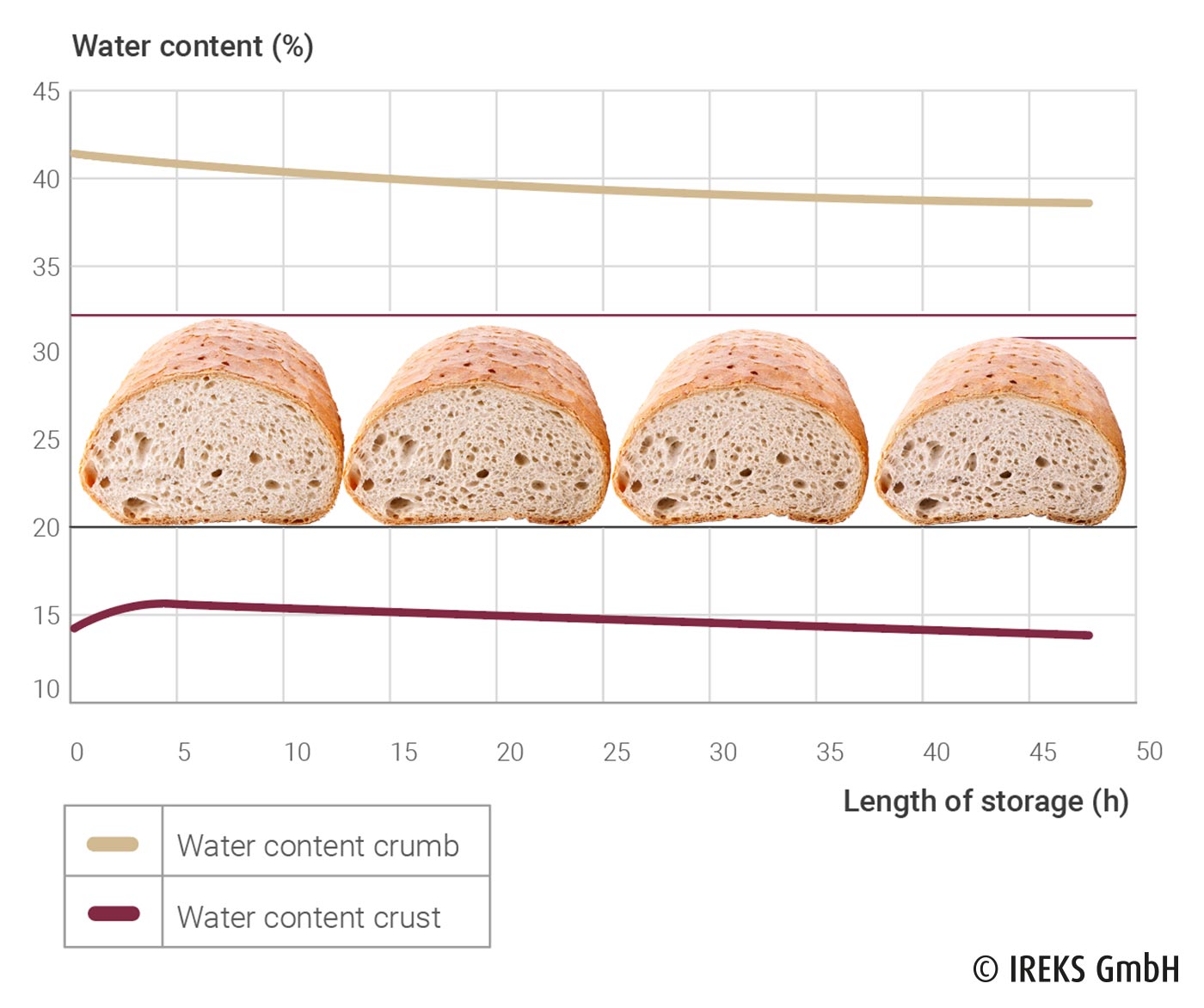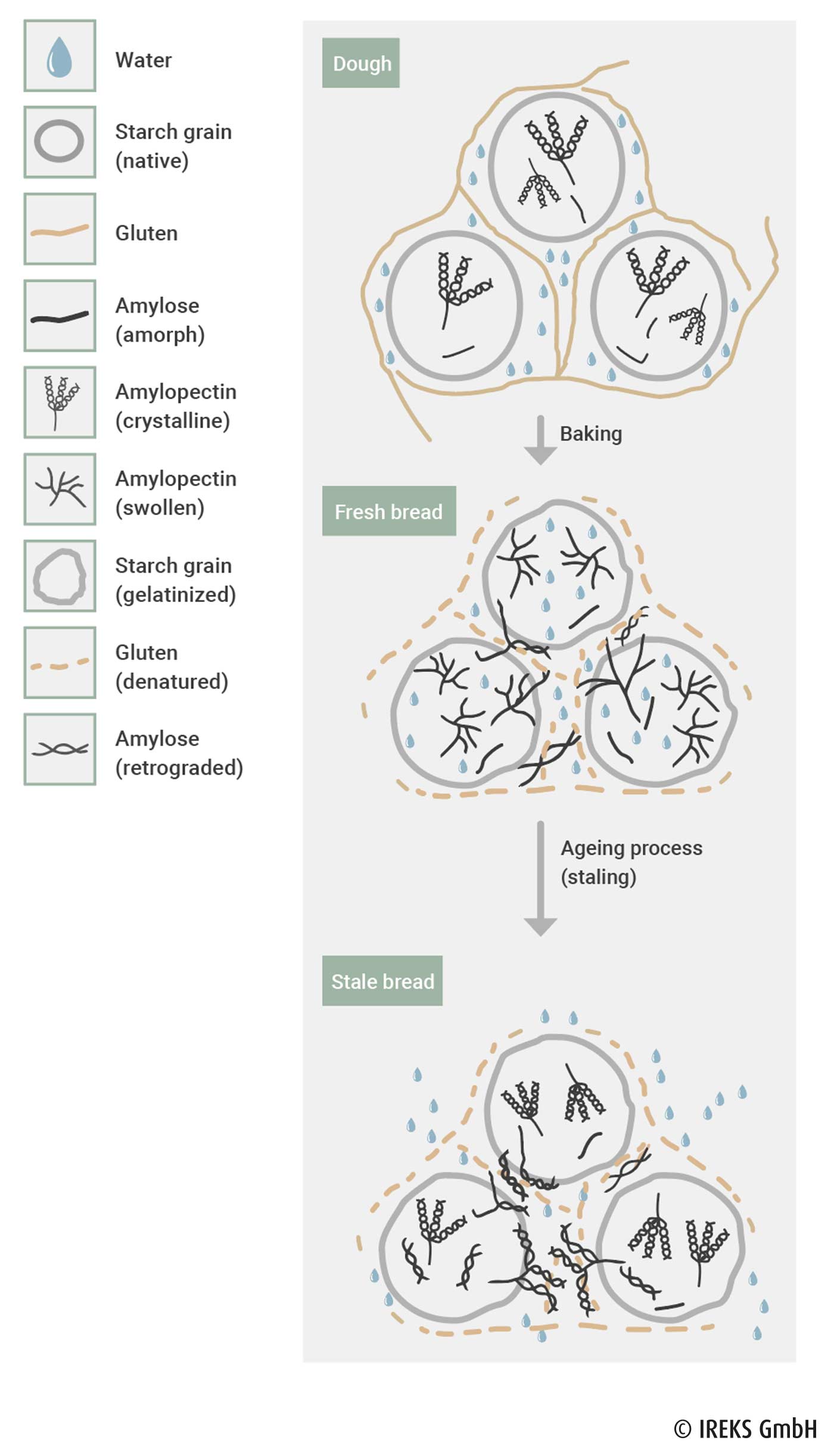Staling already begins immediately after the baking process with the cooling of the baked goods. Some baked goods are ascribed a certain maturing time after cooling (cf. Klingler 1995). Freshly baked, newly cooled coarse rye bread still sticks a little when chewing. Wheat bread or wheat morning goods can, on the other hand, be consumed directly after cooling. Wheat morning goods already lose their crispness after some hours following the baking process and the crust becomes tough. For this reason, they are generally eaten a few hours after baking. Rye bread or mixed rye bread, however, largely even keep their fresh properties for several days after production. With a rising percentage of rye, the freshkeeping properties improve.
During cooling, the baked goods lose water and there is a displacement of the water from the crumb, which is rich in water, to the dry crust, which has little water and which, in turn, releases the water into the ambient atmosphere. In this way, the crust of the baked goods loses crispness and, with an increasing length of storage, the crumb becomes firm. In addition to the water loss, there is also a loss of volatile flavouring substances, whereby the aroma and taste of the baked goods change. Moreover, there is a loss in volume in the baked goods.
During the dough preparation, the water is bound by the gluten network and the pentosans. A part of the water is adsorbed on the upper surface of the starch grains. During the baking process, the starch grains swell and the gluten proteins denature and release the bound water, which is then absorbed by the gelatinizing starch.
During bread ageing, a recrystallization process takes place, which is called retrogradation. Both starch components, amylose and amylopectin, behave in a different way in this process.
The amorph (uncoordinated) amylose already retrogrades during the cooling of the baked goods and determines the crumb firmness immediately after cooling. During the storage time, the amylopectin slowly goes from a swollen state back to a crystalline state. During retrogradation,
helix structures are formed and the creation of hydrogen bonds takes place between the starch polymers. These processes happen at the same time as a discharge of water, which is also known as synaeresis. Thus, the crumb becomes firm and dries out.
The retrogradation of amylose is irreversible, that of amylopectin can partly be reversed by “crisping up”, whereby an impression of freshness once more appears for a short time in the baked goods (cf. Freund 2004; Klingler 1995).


